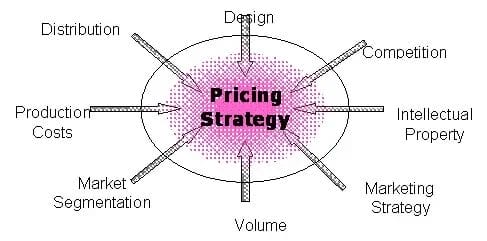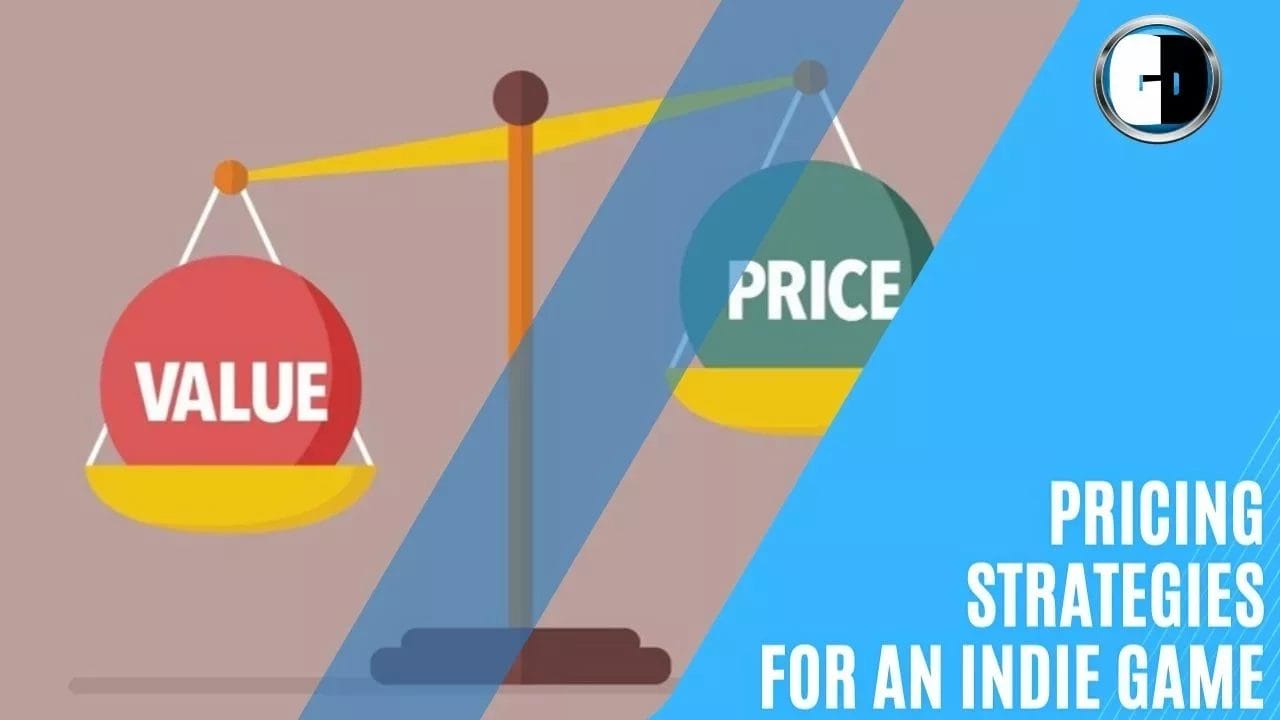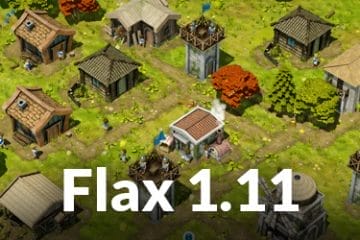Pricing your indie game is an art, not a science. It requires creativity and discernment to craft a price that will ensure success without alienating potential customers. Pricing strategies for an indie game , can be an arduous challenge to determine the ideal selling price for their game. Some may opt for an affordable model while others might decide upon charging more as they seek greater success; all of these decisions require careful consideration!
To assist you with pricing your title, we’ve compiled five unique strategies for pricing games. Delve into them and see which one best suits your product!

Contents: Pricing strategies for an indie game

Understand the Market
To effectively price your indie game, it is crucial to have a solid understanding of the market. Research similar games in your genre and analyze their pricing strategies. Consider factors such as the average price range, the value proposition of your game compared to competitors, and any unique features or advantages your game offers.
By understanding the market, you can determine where your game fits in terms of pricing and ensure that it is competitive and appealing to potential customers.
Consider Your Target Audience
Your target audience plays a significant role in determining the pricing strategy for your indie game. Different demographics have varying purchasing behaviors and price sensitivity.
For example, if your game targets a younger audience or casual gamers, a lower price point may be more enticing. On the other hand, if your game caters to a niche or hardcore gaming audience, they may be willing to pay a higher price for a unique and immersive experience.
Analyze Costs and Revenue Goals
Before setting a price, it is essential to analyze the costs associated with developing and marketing your indie game. Consider factors such as development expenses, licensing fees, marketing costs, and future updates or expansions.
Additionally, determine your revenue goals and the number of units you aim to sell. This will help you calculate the breakeven point and evaluate the feasibility of different pricing options.
Experiment with Pricing Tiers
Offering different pricing tiers can be an effective strategy for attracting a wider range of customers. Consider bundling your game with additional content or offering special editions at higher price points.
By providing options, customers can choose the package that best suits their preferences and budget. This strategy also allows you to capture different segments of the market and potentially increase your overall revenue.
Monitor and Adjust
Once you have set your initial price, it is crucial to monitor its performance and gather feedback from customers. Pay attention to sales data, customer reviews, and any market trends or competitors’ pricing changes.
Based on this information, be open to adjusting your pricing strategy if necessary. This could involve lowering the price to attract more customers or increasing it if you believe your game’s value has been underestimated.
Remember, pricing is not set in stone, and it is important to be flexible and responsive to market dynamics.

Evaluate Your Development Costs
Before finalizing the pricing strategy for your indie game, it is crucial to evaluate your development costs. Consider factors such as:
1. Development team expenses: Calculate the cost of hiring and paying your development team, including programmers, artists, sound designers, and any other professionals involved in the creation of your game.
2. Software and hardware costs: Determine the expenses incurred for purchasing or licensing software and hardware needed for game development, such as game engines, design tools, and computer equipment.
3. Licensing and legal fees: If you are using licensed assets or third-party software, consider the fees associated with obtaining the necessary licenses. Also, account for any legal fees related to copyright or trademark protection.
4. Marketing and promotional expenses: Estimate the budget required for marketing and promoting your game. This includes costs for creating marketing materials, attending events or trade shows, running online advertising campaigns, and hiring influencers or PR agencies.
5. Localization and testing costs: If you plan to release your game in multiple languages or target specific regions, factor in the expenses for localization and quality assurance testing.
By evaluating your development costs, you can determine the minimum price you need to set to cover your expenses and ensure a return on investment. This analysis will help you make informed decisions about the pricing strategy that aligns with your financial goals.
Perceived Value and Quality
Aside from considering the market, target audience, and development costs, it is essential to assess the perceived value and quality of your indie game when determining the pricing strategy. The perceived value refers to how customers perceive the worth of your game based on its features, gameplay, graphics, replayability, and overall entertainment value.
If your game offers unique and innovative gameplay mechanics, stunning visuals, a captivating storyline, or exceptional user experience, it may warrant a higher price point. On the other hand, if your game is relatively simple, lacks advanced features, or has shorter gameplay, a lower price may be more appropriate.
Additionally, consider the quality of your game compared to competitors. If your game stands out in terms of quality and offers a superior experience, customers may be willing to pay more for it. Conversely, if your game is of lower quality or has known issues, it may be necessary to adjust the price accordingly to match its perceived value.
It is crucial to strike a balance between the perceived value, quality, and price of your indie game. Conducting playtests, gathering feedback from beta testers, and analyzing customer reviews can help you assess the value and quality of your game objectively.
By understanding the market, target audience, development costs, and the perceived value and quality of your indie game, you can determine a pricing strategy that maximizes its appeal to customers while also ensuring a fair return on investment.
Target Audience
Understanding your target audience is crucial for any successful marketing campaign. By identifying and analyzing the demographics, preferences, and behaviors of your target audience, you can tailor your messaging and strategies to effectively reach and engage them.
This means taking into account factors such as age, gender, location, income level, and interests. Conducting market research, surveys, and focus groups can provide valuable insights into your audience’s needs, motivations, and pain points.
Armed with this information, you can create targeted content that resonates with your audience, ultimately driving better results for your business. It’s important to remember that your target audience may evolve over time, so ongoing research and analysis are necessary to stay ahead of the curve. Additionally, understanding your target audience goes beyond just demographics.
It also involves understanding their values, beliefs, and aspirations. By building a deep understanding of your audience, you can connect with them on a more meaningful level, building trust and loyalty.
This can lead to increased brand awareness, customer retention, and overall business growth. So, whether you’re launching a new product, running a social media campaign, or developing a content strategy, always keep your target audience in mind. They are the key to your success.

Pricing Strategies
What is the most effective way to price an indie game?
When contemplating the ideal way to price an indie game, it’s essential to consider what your market will accept.
For those who have not yet established pricing strategies for their indie games, a range of options exist: from free-to-play to the most renowned premium tiers and beyond. You can even decide if you’d like to keep it simple with one fixed price or explore various price points in hopes of attracting more customers.
How much should you charge for your game?
Though all e-learning courses and games are free to access, some feel compelled to offer their titles for sale. The decision of whether or not to charge money for your product is one that deserves careful consideration.
If you elect to create a paid-for game, then it should be priced at $40 – $80 /£35 – £60 ($60-$100/$100-$200). If you opt for a free option you can expect the average price tag for a premium title in this range – $100 ($120-$240/$250+)
What are some tips and strategies for pricing an indie game?
The truth is that the pricing strategy you employ will depend solely on the circumstances – and even then, it will be different for each individual project. However, there are some general tips we could provide regarding this aspect of game sales:
Ensure your product matches what your target audience desires. You don’t want to alienate potential customers by pricing it out of their range! Ensure that your game is attractive enough to draw in gamers’ attention. Remember that price is merely one side of an equation – while others like quality and content may take precedence over monetary gain; if these factors aren’t up to snuff, don’t be surprised if sales remain lackluster.
By all means offer a more affordable version of your game that caters to budget-conscious consumers; moreover those who seek out more generous value might even opt for a patronizingly low pledge amount! If you’re looking for ways to maximize profit, consider bundling together multiple products together into a compact bundle as an option for potential buyers.
Ensure value for money; every sale should result in a net gain when compared with upfront costs incurred during development and marketing.
Whether you choose to go with pay-what-you-want or any other alternative methods, keep in mind that from the consumer’s perspective they are only purchasing the title they desire while still paying less than they initially spent on the investment required to realize that dream – leaving room for additional revenue streams such as ad revenue or affiliate income!
How much do you charge per extra in-game item or scale of item?
If you’re opting for an item creation program, consider whether you should price individual pieces or entire items. Note that pricing individual components may be more cost-effective; however, if an item requires a unique design then the price may be higher than expected due to additional components needed for its completion.
Are you creating a small number of game details? Perhaps it would make sense to charge less per piece. Alternatively, if your project requests a plethora of features – such as avatars – then one option might be to charge more per extra feature added (i.e. accessorize). This could help ensure that all investors have enough money to complete their game!
Do you adjust the price based on percentage of funding goal reached?
When striving to achieve a crowdfunding goal-setting, some developers may elect to increase the cost of their project based on the amount of funds pledged. In an effort to attain financial success, these schemes can prove useful when determining how much of that investment should go back towards reward materials such as T-shirts and stickers with each pledge made toward patronage.
On the contrary, some choose to price games at a lower rate in order to entice support–allowing them to offer more enticing perks for backers. This strategy is commonly employed by those seeking crowd-funding assistance; however, it can also be exploited by entrepreneurs seeking capital.to ensure that your product aligns with what your target audience desires, so you don’t alienate potential customers by pricing it out of their range. Additionally, make sure your game is attractive enough to draw in gamers’ attention, as price is just one aspect of the equation. Factors like quality and content may take precedence over monetary gain. If these factors aren’t up to snuff, don’t be surprised if sales remain lackluster.
Consider offering a more affordable version of your game for budget-conscious consumers, as well as a higher-priced option for those seeking more generous value. To maximize profit, you can bundle multiple products together into a compact bundle option for potential buyers. However, always ensure value for money and aim for every sale to result in a net gain compared to upfront costs incurred during development and marketing.
Whether you choose pay-what-you-want or any other alternative pricing methods, remember that from the consumer’s perspective, they are only purchasing the title they desire while paying less than they initially invested in realizing that dream. This leaves room for additional revenue streams such as ad revenue or affiliate income.
Ultimately, when deciding how much to charge for your indie game or any extra in-game items or features, it’s essential to carefully consider your market’s expectations and what will resonate with them. You may also want to explore adjusting the price based on the percentage of funding goal reached during crowdfunding campaigns. Some developers choose to increase the cost of their project based on pledged funds to allocate more towards reward materials like T-shirts and stickers. On the other hand, lowering prices can entice support and attract more backers.
In conclusion, pricing an indie game requires thoughtful consideration of various factors and an understanding of your target audience’s preferences. By finding the right balance between affordability, value, and revenue potential, you can optimize your pricing strategy for success.
When it comes to pricing strategies for an indie game, there is no one-size-fits-all approach. The most effective way to price your game will depend on various factors such as your target audience and the value you offer. It’s crucial

What are some mistakes you see indie developers make when pricing their games?
Many game developers choose how much they’re willing to pay for their games, and this decision can determine your success. However, some key mistakes often lead to diminishing returns, effectively ending up with a project that isn’t as lucrative as expected.
For instance, one common mistake indie developers make is overestimating the potential sales of their product when pricing their game. For example, if you set the price too high it could cause an unanticipated result like lackluster sales numbers or even no sales at all!
On the other hand, if you underprice your game then it may result in a low take-up rate and consequently smaller profits for investors.
Additionally, developers often fail to consider the cost incurred during production – such as dev time, quality assurance checks and so forth. These factors have an impact on profitability, so it’s critical to factor them in during pricing decisions!
Conclusion:Pricing strategies for an indie game
As an indie game developer, it is essential to comprehend your product’s value and communicate it in a way that will entice potential buyers. Establishing an appropriate price point for your game is crucial in order to attain maximum visibility and attract more support – as well as minimizing any risk associated with publishing it.
Some common mistakes that indie developers make when pricing their games include:
1. Overestimating potential sales: Setting the price too high can lead to lackluster sales or no sales at all. It’s important to understand your target audience and their willingness to pay for your game.
2. Underpricing the game: While setting a low price may attract more buyers, it can also result in smaller profits for investors. It’s important to consider the cost incurred during production and factor that into your pricing decisions.
3. Not considering the value of the game: Understanding the value your game offers and effectively communicating it to potential buyers is crucial. This will help entice them to purchase your game at the price you have set.
4. Neglecting to factor in production costs: Developers often forget to consider the costs incurred during production, such as development time and quality assurance. These costs should be factored into your pricing decisions to ensure profitability.
In conclusion, pricing an indie game requires careful consideration of factors such as target audience, value, and production costs. By avoiding these pricing mistakes, you can optimize your pricing strategy and increase the chances of success for your game.
A game developer that wants to share its knowledge and experience with other game developers-









